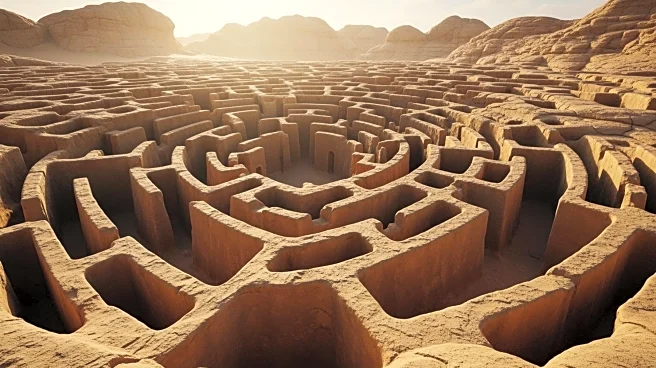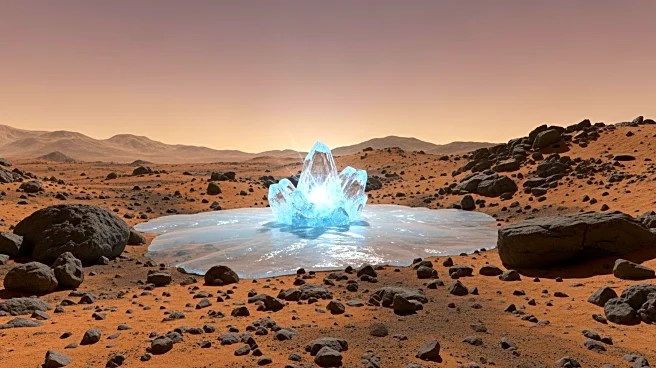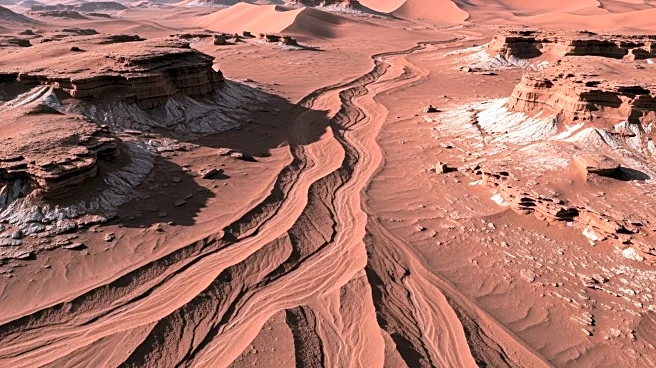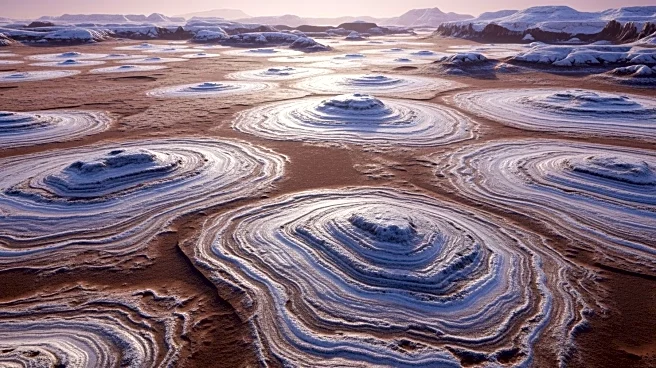What's Happening?
Scientists have discovered intricate tunnels in the deserts of Namibia, Saudi Arabia, and Oman, carved into solid rock by an unknown lifeform. These tunnels, found in ancient marble and limestone, are
no wider than half a millimeter and extend up to three centimeters long. The discovery, initially made by geologist Cees Passchier, has evolved into a puzzle challenging assumptions about life on Earth. Researchers have found evidence of biological material in the tunnels, but no recoverable DNA or proteins. The tunnels are often filled with fine calcium-carbonate powder, suggesting a microscopic organism may be responsible. The findings have been documented in the Geomicrobiology Journal, highlighting the presence of these structures in various locations.
Why It's Important?
This discovery is significant as it challenges existing notions of where life can exist on Earth. The presence of these tunnels in marble and limestone, materials not easily bored, suggests that life can thrive in unexpected places. The activity of the organism responsible for these tunnels may have influenced local carbon cycling, highlighting the role of subterranean microbes in Earth's carbon cycle. This finding broadens the understanding of habitable environments, potentially impacting the search for life beyond Earth, such as on Mars or icy moons.
What's Next?
Researchers are continuing to investigate the origins of these tunnels, aiming to identify the organism responsible. This ongoing research may uncover new insights into the capabilities of life on Earth and inform the search for extraterrestrial life. The study of these tunnels could lead to a deeper understanding of Earth's carbon cycle and the role of microorganisms in it.
Beyond the Headlines
The discovery of these tunnels may have implications for understanding the resilience and adaptability of life. It suggests that life can persist in extreme environments, potentially informing future studies on climate change and environmental conservation. The research may also contribute to the development of new technologies or methods for exploring and utilizing subterranean environments.












